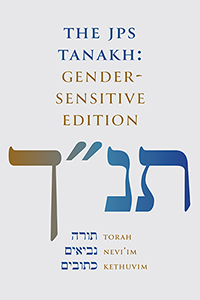וְלָבָ֣ן הָלַ֔ךְ לִגְזֹ֖ז אֶת־צֹאנ֑וֹ וַתִּגְנֹ֣ב רָחֵ֔ל אֶת־הַתְּרָפִ֖ים אֲשֶׁ֥ר לְאָבִֽיהָ׃
Meanwhile Laban had gone to shear his sheep, and Rachel stole her father’s oracle idols.*
*Figurines, apparently with a human form, used as a medium in divination.
(The above rendering—and footnote—come from the RJPS translation, an adaptation of the NJPS translation. Before accounting for this rendering, I will analyze the plain sense of the Hebrew term in question, terafim.)
Here I rely mainly upon a careful and sober scholar’s recent review of scholarship and of the evidence, namely Kerry Sonia, Caring for the Dead in Ancient Israel (SBL Press, 2020:103–107). Her main points are:
- Although the interpretation of terafim as household gods once dominated scholarly views [and clearly influenced NJPS in some passages], it seems to have fallen largely out of favor.
- Others (e.g., Van der Toorn 1990) have argued that terafim are ancestor figurines used in necromancy (i.e., for consulting the spirits of the deceased), but there are several serious problems with this view.
- The Bible clearly associates these objects with divination and with access to divine beings, but they are linked at best tenuously with ancestors and with necromancy.
Sonia’s conclusion (emphasis added) is as follows:
- I am unconvinced that the terafim are ancestor figurines used in necromancy or that necromancy is a facet of the biblical cult of dead kin. What does seem relatively clear based on the evidence…is that the terafim are objects used in divination… and that they or the entities they represent are construed as divine…. It seems plausible that the terafim are—or at least represent—divine beings capable of delivering oracles to those who possess them. The appearance of the terafim in domestic spaces… further suggests that this mode of divination is associated with Israelite family religion. To say much more than that, however, is overly speculative.
NJPS rendered terafim in several different ways, depending upon the context. I have now standardized the varied NJPS treatments, so that the term is consistently rendered as “oracle idols” (except when in the singular, in one story); and I have added an explanatory footnote in most cases. This rendering is consistent with the NJPS footnote in the two passages where NJPS had merely transliterated the term: “Idols consulted for oracles.”
I coined the term “oracle idols,” which has three advantages: the modifier “oracle” is informative as to function and also discourages the notion that these objects were used in worship (as “idol” by itself normally implies); the head noun “idol” is informative both as to the object’s form, and to its association with divinity; and the combined term fits all NJPS settings.
(Sonia’s mention of the association “with Israelite family religion” goes without saying in the translation, because that fact is already obvious in each familial context of use.)




